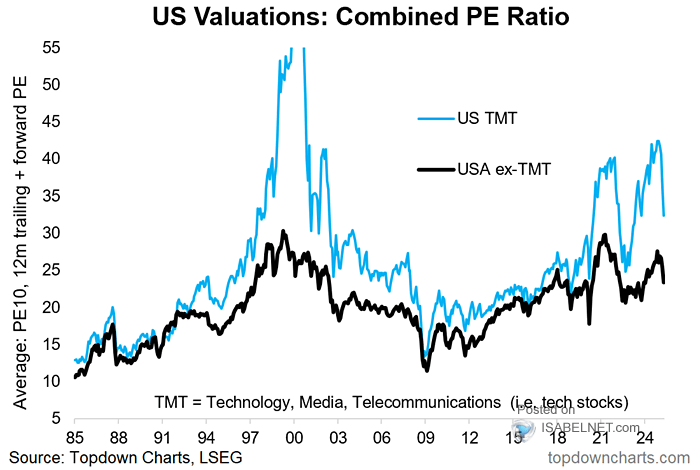The Impact Of Soaring Grocery Prices: Inflationary Trends Continue

Table of Contents
Understanding the Drivers of Soaring Grocery Prices
Several interconnected factors contribute to the current surge in grocery prices, creating a perfect storm of grocery inflation.
Increased Production Costs
The rising cost of producing food is a major driver of grocery inflation. This includes:
- Rising fuel prices: Increased fuel costs significantly impact transportation, from getting crops from the farm to the supermarket shelves, driving up the price of nearly everything. This affects both the farmer's costs and the costs of getting goods to retailers.
- Higher fertilizer and energy costs: Fertilizers and energy are critical inputs in agriculture. Their price increases directly translate to higher food production costs, impacting everything from grains to livestock feed. The impact is magnified for farmers using large quantities of these resources.
- Supply chain disruptions: Bottlenecks in the supply chain continue to cause shortages and drive up prices. Delays in transportation and logistical challenges further exacerbate the problem. This is evident across various food categories, leading to empty shelves and increased costs.
- Specific examples: The price of wheat, a staple grain, has risen sharply due to global supply issues and conflict. Similarly, dairy and meat prices have increased due to feed costs and transportation challenges.
Global Supply Chain Issues
Global supply chain disruptions play a significant role in soaring grocery prices.
- Pandemic aftermath: The lingering effects of the pandemic continue to disrupt global trade and logistics, leading to delays and shortages.
- Geopolitical instability: International conflicts and geopolitical tensions impact food exports and imports, creating uncertainty and volatility in the global food market. This ripple effect is felt across the globe.
- Weather patterns: Extreme weather events, including droughts and floods, significantly impact crop yields and livestock production, leading to reduced supply and increased prices. This unpredictability adds to existing challenges.
- Global event examples: The war in Ukraine has significantly impacted global wheat and sunflower oil supplies, leading to price spikes in these commodities.
Increased Demand and Consumer Behavior
Increased demand and changing consumer behavior also contribute to grocery inflation.
- Shifting consumer habits: Post-pandemic, we've seen changes in consumer preferences and increased demand for certain goods, leading to shortages and price increases in those specific areas.
- Economic recovery: The post-pandemic economic recovery has increased overall consumer spending, including on food, putting further pressure on prices.
- Market speculation: Speculation and market manipulation can also drive up prices, creating artificial scarcity and exacerbating the problem. This behavior creates volatility and uncertainty.
The Economic and Social Impact of High Grocery Prices
The impact of soaring grocery prices extends beyond individual budgets, affecting various aspects of society and the economy.
Impact on Low-Income Households
For low-income households, soaring grocery prices pose a significant threat:
- Food insecurity: Increased food insecurity and malnutrition are serious consequences, forcing difficult choices between essential needs.
- Limited healthy food access: Access to affordable and nutritious food becomes increasingly limited, impacting health and well-being.
- Difficult choices: Families are forced to make difficult choices between paying for food, housing, healthcare, or other necessities.
Impact on Middle-Class Families
Even middle-class families are feeling the pinch of soaring grocery prices:
- Reduced disposable income: Rising food costs significantly reduce disposable income, forcing families to tighten their budgets.
- Lifestyle adjustments: Families may need to make significant lifestyle adjustments to cope with increased grocery bills.
- Increased financial anxiety: The continuous increase in the cost of living, especially food, increases stress and financial anxiety.
Impact on Businesses and the Economy
The impact of soaring grocery prices ripples through the entire economy:
- Reduced consumer spending: Higher grocery bills leave less money for spending in other sectors, impacting businesses and employment.
- Potential unemployment: Decreased consumer demand can lead to job losses in various sectors, potentially creating a domino effect.
- Impact on food service: Restaurants and the food service industry are particularly vulnerable to increased food costs, potentially affecting prices and profitability.
Strategies for Coping with Soaring Grocery Prices
While the situation is challenging, there are strategies to help manage the impact of soaring grocery prices.
Budgeting and Meal Planning
Careful planning is crucial to minimize the impact of rising food costs:
- Detailed grocery budget: Create a detailed budget to track spending and identify areas for savings.
- Meal planning: Plan meals in advance to reduce food waste and ensure efficient shopping.
- Utilizing savings: Take advantage of coupons, discounts, and loyalty programs offered by supermarkets.
Smart Shopping Habits
Strategic shopping habits can help stretch your grocery budget:
- Price comparison: Compare prices across different stores and brands to find the best deals.
- Bulk buying: Buy in bulk when feasible and cost-effective, especially for non-perishable items.
- Seasonal produce: Choose seasonal fruits and vegetables, as they are generally cheaper and fresher.
Utilizing Resources and Support
Don't hesitate to utilize available resources:
- Food banks: Access food banks and community assistance programs to supplement your grocery needs.
- Government assistance: Explore government assistance programs such as SNAP (Supplemental Nutrition Assistance Program) benefits.
- Financial counseling: Seek financial counseling to learn effective budgeting techniques and manage your household finances.
Conclusion
The relentless rise in soaring grocery prices presents a significant challenge to consumers and the economy as a whole. Understanding the contributing factors, from increased production costs to global supply chain disruptions, is crucial for developing effective strategies to mitigate the impact. By adopting smart shopping habits, carefully budgeting, and utilizing available resources, individuals can navigate these difficult economic times. However, addressing the root causes of soaring grocery prices requires collective action and policy changes to ensure food security and affordability for everyone. Stay informed about the latest trends in soaring grocery prices and take proactive steps to protect your family's financial well-being. Start planning your grocery budget and implementing smart shopping habits to combat the effects of soaring grocery prices today.

Featured Posts
-
 Combate El Envejecimiento Y Las Enfermedades Cronicas Con Este Superalimento
May 22, 2025
Combate El Envejecimiento Y Las Enfermedades Cronicas Con Este Superalimento
May 22, 2025 -
 Cordistes A Nantes Une Profession En Plein Essor Face A La Croissance Urbaine
May 22, 2025
Cordistes A Nantes Une Profession En Plein Essor Face A La Croissance Urbaine
May 22, 2025 -
 Assessing Stock Market Valuations Bof As Advice For Investors
May 22, 2025
Assessing Stock Market Valuations Bof As Advice For Investors
May 22, 2025 -
 Un Siecle De Diversification A Clisson Pres De Moncoutant Sur Sevre
May 22, 2025
Un Siecle De Diversification A Clisson Pres De Moncoutant Sur Sevre
May 22, 2025 -
 Jim Cramer On Core Weave Crwv A Contrarian View On Ai Infrastructure Leadership
May 22, 2025
Jim Cramer On Core Weave Crwv A Contrarian View On Ai Infrastructure Leadership
May 22, 2025
Latest Posts
-
 Crwv Stock Thursday Decline Causes And Market Implications
May 22, 2025
Crwv Stock Thursday Decline Causes And Market Implications
May 22, 2025 -
 Core Weave Crwv Stock Performance Tuesday Market Reaction And Future Outlook
May 22, 2025
Core Weave Crwv Stock Performance Tuesday Market Reaction And Future Outlook
May 22, 2025 -
 Core Weave Crwv Stock Surge Reasons Behind Last Weeks Rise
May 22, 2025
Core Weave Crwv Stock Surge Reasons Behind Last Weeks Rise
May 22, 2025 -
 Understanding The Thursday Dip In Core Weave Inc Crwv Stock Price
May 22, 2025
Understanding The Thursday Dip In Core Weave Inc Crwv Stock Price
May 22, 2025 -
 Analyzing Core Weave Inc Crwv Stocks Drop On Tuesday
May 22, 2025
Analyzing Core Weave Inc Crwv Stocks Drop On Tuesday
May 22, 2025
